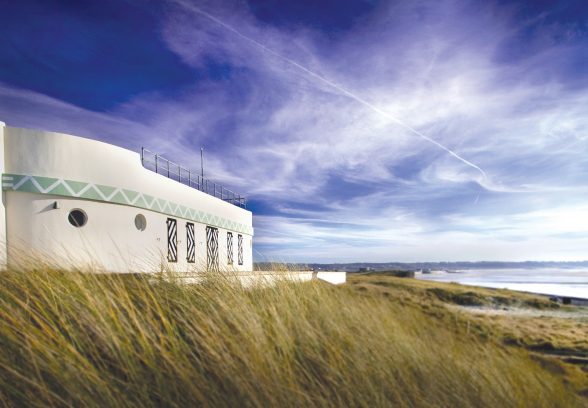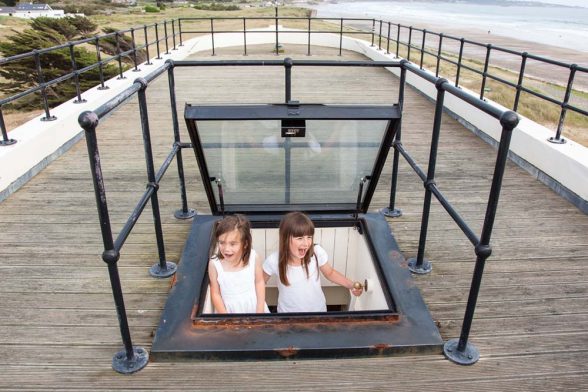This website uses cookies
This website uses cookies to enable it to function properly and to analyse how the website is used. Please click 'Close' to accept and continue using the website.



Barge Aground, St Quen’s Bay, Jersey
Sleeps: 6
1930s
Unknown architect
Builder: Mark Amy Limited
Sleeps: 6
Sitting in the rugged landscape of the dunes in Jersey’s only national park, this is the last of the seaside follies and chalets which once lined the bay.
Recommended by Avis Furness:
“It is right on the edge of the sea and is built in the shape of a boat. It is one of those buildings that makes one laugh out loud the first time one sees it. Barge Aground has had a varied history and was rescued by Jersey Heritage and restored in 2005. The interior has a very 1930s feel to it. There are restaurants close by and two surfing schools. We visit Jersey every year (sadly, not this year) and although we have never been lucky enough to stay in either of these buildings (also referring to Jersey’s Radio Tower), we have had the opportunity to visit them on one of the open days organised by Jersey Heritage.”

Background to the building: George Lionel Cox commissioned the building of the Barge Aground (also known as ‘Seagull’) circa 1935. It is not known who designed the boat-shaped building but it was built by Mark Amy Limited. Cox travelled all over the world and acquired many antiques and curios – some of which were used to furnish the Barge Aground. He returned to England just before the German Occupation.
Barge Aground was requisitioned by the German occupying forces in 1941 and used as a canteen by Machine Gun Battalion 16. The building was painted with camouflage with much of the contents looted and shipped to Germany. After the war, Lionel Cox returned to the Barge Aground and the building was restored as a beach chalet.
George Lionel Cox left the property to The Scout Association in his will in 1955. It was then leased to Mr William Chalmers Kerr until 1971. Mr Kerr was a research psychologist from Glasgow University who specialised in speech disorders. He used the barge as his clinic with patients visiting from around the world.
The site was used in the 1970s and 1980s by the Scouting Association as a base for camping activities – mainly as additional sleeping accommodation when the Island played host to large scout camps in the summer. The walled garden was used as a safe area for the younger cub scouts to set up their tents. The building was also used to entertain visiting guests such as the Chief Scout Sir William Gladstone in 1978.
The Scout Association sold the property to the Public of the Island in 1997, although it continued to use the site until 2001.
The folly was restored in 2005 as part of the ‘Forts and Towers’ project; a collaboration to restore historical properties between States of Jersey’s Environment Department, Jersey Tourism and Jersey Heritage.

Become a C20 member today and help save our modern design heritage.
Comments